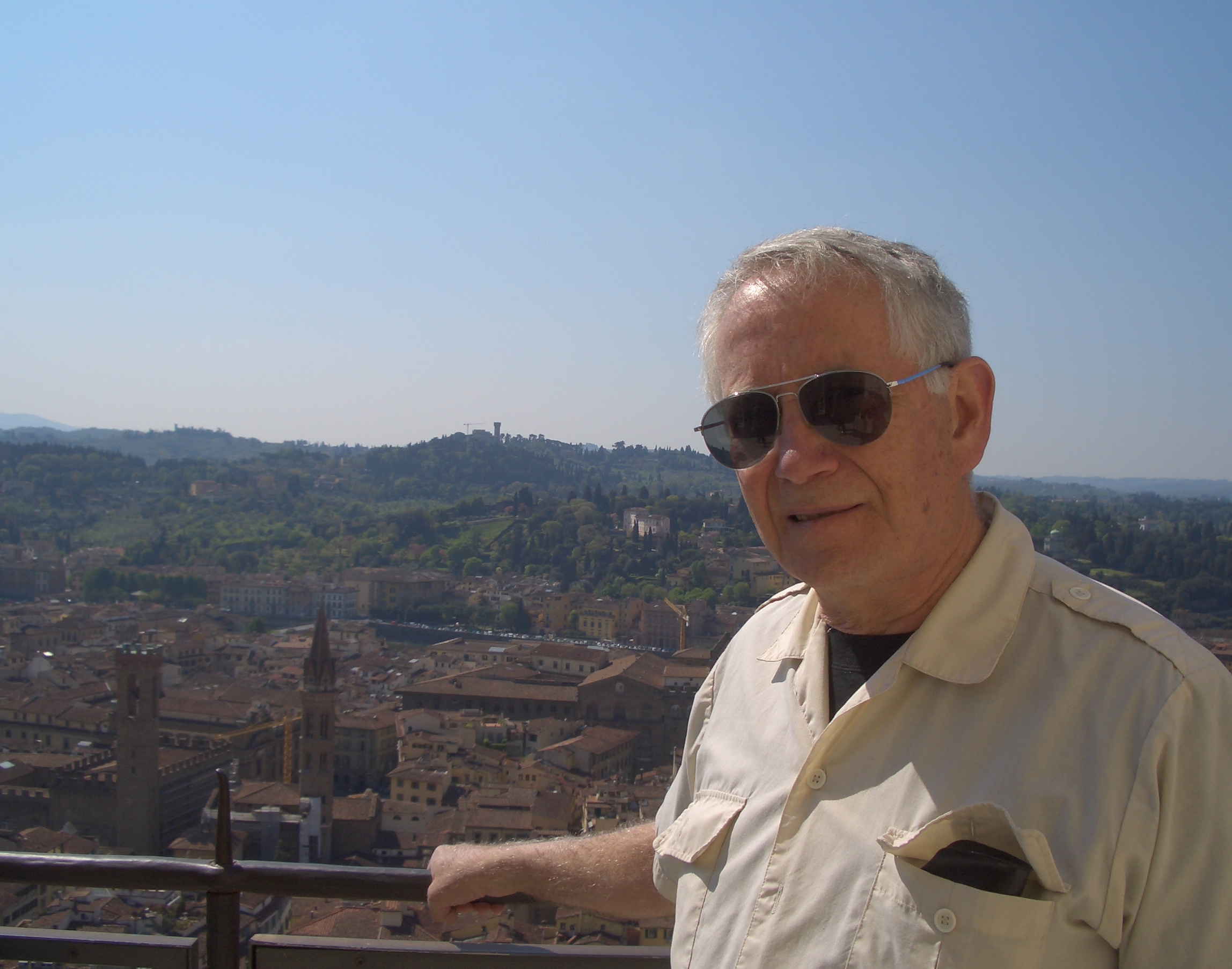Recently I’ve been revisiting Galileo—in Italy. The American Academy in Rome invited me to participate in its 400th anniversary celebration of the night, April 14, 1611, when he demonstrated his telescope to important patrons atop the Roman hill called the Gianicolo, on an estate now belonging to the Academy. Most of the 2011 event took place outdoors, in imitation of the original banquet, although the weather proved not as cooperative. I hadn’t spoken two words into the microphone before a fine drizzle began falling, and several of the late-night activities—including, alas, the star-gazing—were heavily rained out. You can see highlights of the evening here.
My brother Steve, who had never before been to Italy, accompanied me. Naturally I wanted to show him as many Galileo sights as possible. As we stood before Galileo’s tomb in the Basilica of Santa Croce, in Florence, it occurred to me that I’d visited this grave site more often than the one where our own parents are buried. But then, I don’t need to go any particular place to feel connected to them.
Steve and I spent a day at Galileo’s other Florentine shrine, the newly renovated and re-named Museo Galileo (formerly the Institute and Museum of the History of Science) near the Uffizi Gallery. Two early telescopes and related representations of his handiwork are on display there, along with several new-found relics: A tooth, thumb, and forefinger now stand beside the more famous bone fragments from the middle finger of his right hand.
From Florence we took a train to Padua, where Galileo claimed to have spent the happiest years of his life, and where more bones awaited us. While visiting the university, “Il Bo,” we learned how a bit of a genuine Galilean vertebra, owned by the School of Medicine, almost gained passage aboard the Juno spacecraft, bound for Jupiter from Cape Canaveral this August. The mission will study the giant planet’s four largest moons, first discovered by Galileo in 1610 and now called the Galilean satellites.
The request from Juno’s principal investigator led to a thorough analysis of the bone, to make certain a tiny piece could be excised without damage to the rest. Although medical examiners approved the operation, astronomers ultimately shied away from the prospect of sending any part of the real Galileo into space. A plaque honoring his name will likely board Juno in his stead, and perhaps also a toy-sized replica of his person.

